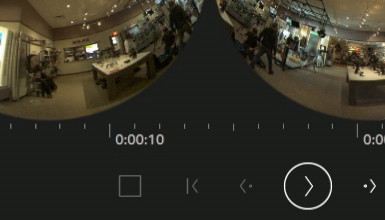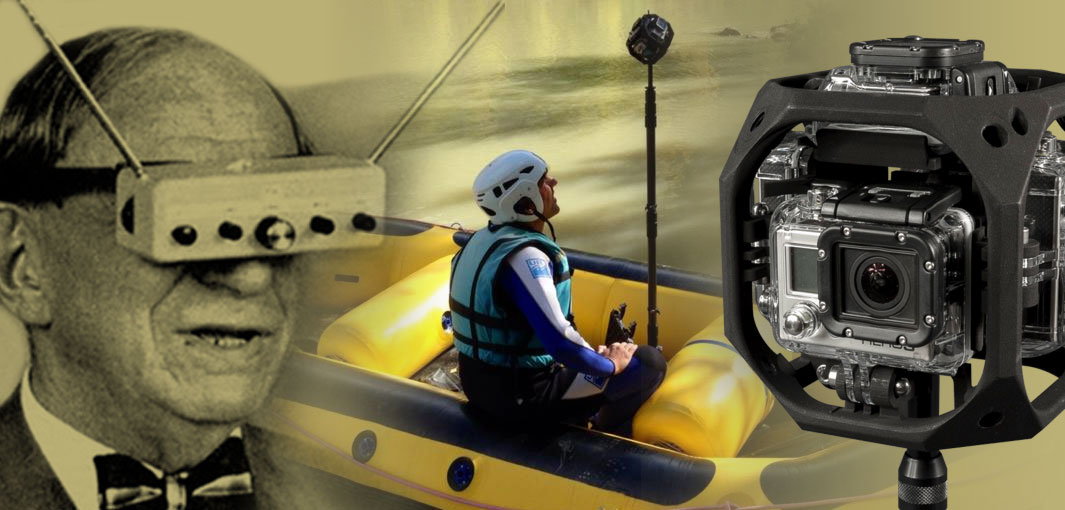
Paris Exposition
The idea of surrounding viewers with moving images to create a Virtual Reality has been around for a long time. The first cinema patent was awarded back in '97 for a process called Cineorama - that's 1897, nearly 120 years ago! Cineorama premiered at the 1900 Paris Exposition, where ten synchronized 70mm projectors projected onto ten, thirty-foot high screens arranged in a full 360° circle. A viewing platform dressed like a hot air balloon, large enough to hold 200 people, was in the center. The film was shot by locking a circular array of ten cameras to a central drive, putting them in an actual hot air balloon, and filming as the balloon rose more than 1,000 feet above Paris. Cineorama's only public viewing was short lived. It closed after only three days for safety reasons, due to the extreme heat from the projectors' arc lights. The virtual experience was more dangerous than the actual reality.
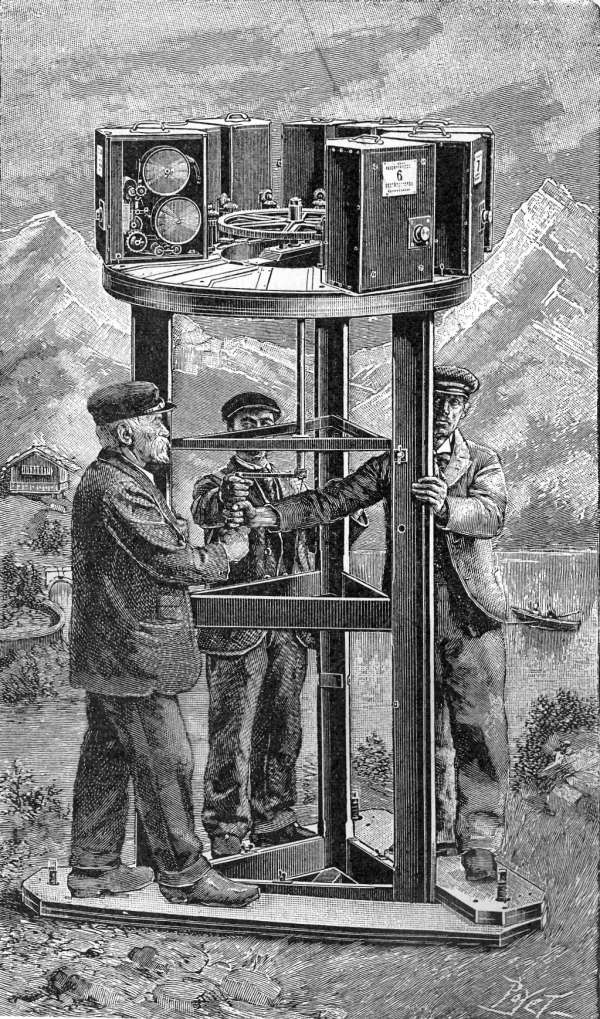 |
 |
Cineorama (1897) Cameras & Projection
Rotundas
Cineorama was inspired by a 360-degree medium introduced a century earlier. In the late 1700's, the Irish painter Robert Barker popularized Panoramic Paintings, enormous paintings that were displayed in purpose-built circular rotundas. Barker's Panoramas were hugely successful and spawned a series of "immersive" panoramas by other artists, which drew thousands of patrons to witness re-creations of exotic locations, nature and battle scenes. A phenomenon resulting from immersion in a panorama, called the "locality paradox", happened when people were unable to distinguish where they were: in the rotunda or at the actual location. Though popular, or maybe due to the attention they received, critics ridiculed Panoramic Paintings claiming they lulled viewers into lethargy, inhibiting their ability to imagine things for themselves.
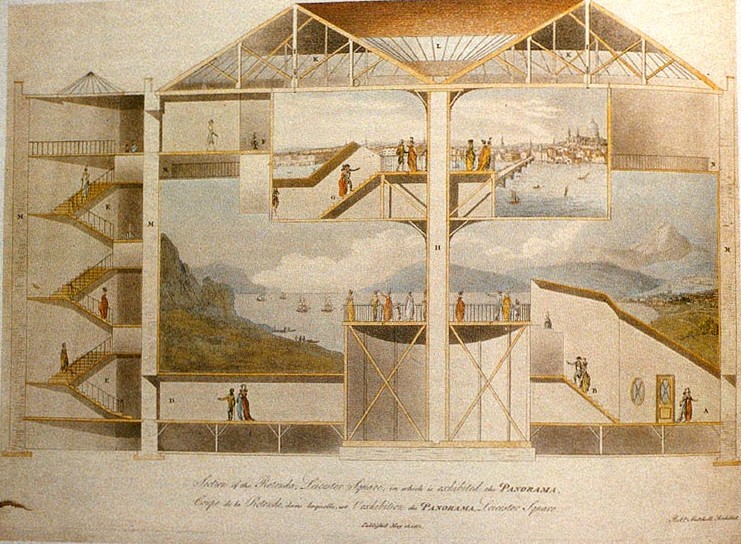
Panoramic Painting Rotunda, London 1801
Encounter at Far Point
Flash forward to the Year 2364 and the Holodeck on the USS Enterprise from the pilot episode of Star Trek - The Next Generation ("Encounter at Far Point" filmed in 1987). The Holodeck is depicted as an enclosed room in which objects and people were simulated by a combination of exotic science fiction technologies like transported matter, force fields and holographics. Starfleet personnel could use the Holodeck for training, diagnostics and recreation, but there were warnings that some may develop an addiction to the Holodeck (a condition known as "holodiction"), leading to unhealthy amounts of time spent in virtual space personifying virtual characters.
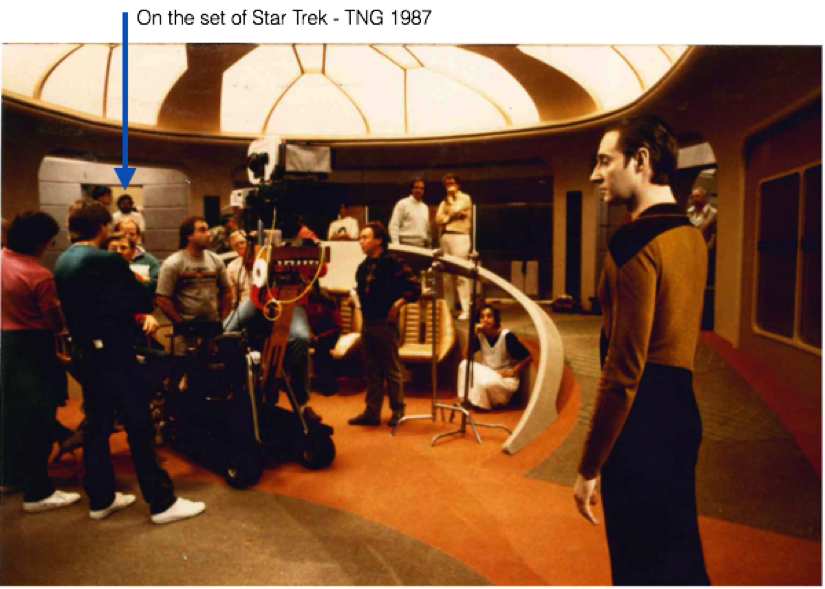
Sword of Damocles
The origin of Virtual Reality, as we think of it today, with a head mounted display (HMD) capable of location tracking, goes back to the late 1960's. Computer graphics pioneer Ivan Sutherland developed an HMD so heavy it had to be suspended from the ceiling. Its formidable appearance led to the name "Sword of Damocles" and required the user's head to be fastened into the device.
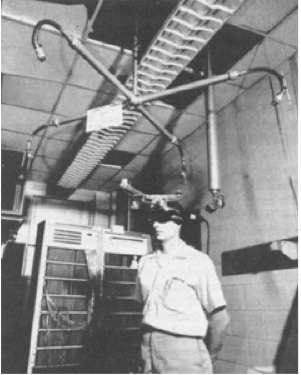
EyePhone
Jaron Lanier coined the term Virtual Reality when he left Atari in 1985 to found VPL Research. In a blaze of prescience, VPL developed an HMD named the "EyePhone". Bulky and with low resolution by today's standards, the device required a full rack of processing hardware to drive it. These and other "ahead of its time" issues put VPL out of business in 1990, but Virtual Reality continued to quietly evolve in military and medical training environments for the next two decades.
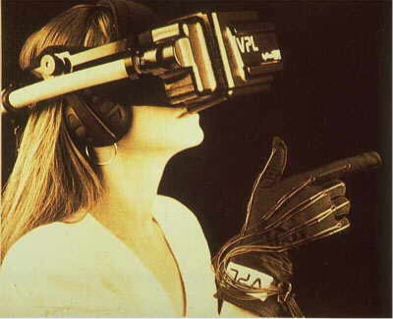
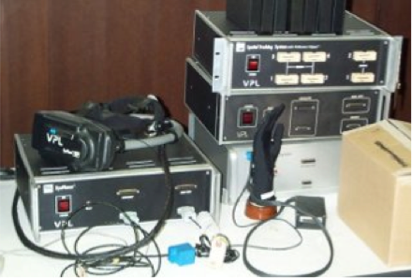
VR Ready
Recently, the convergence of numerous technical and social influences has created a groundswell of activity and interest in Virtual Reality. On the display side, there are two trends. First is the development of dedicated, sophisticated viewing goggles, as in the Oculus Rift. The enormous $2B investment that Facebook made in Occulus last year was a significant catalyst for manufacturers like Samsung, Sony, and others to develop Head Mounted Displays as computer peripherals to sell for two or three hundred dollars.
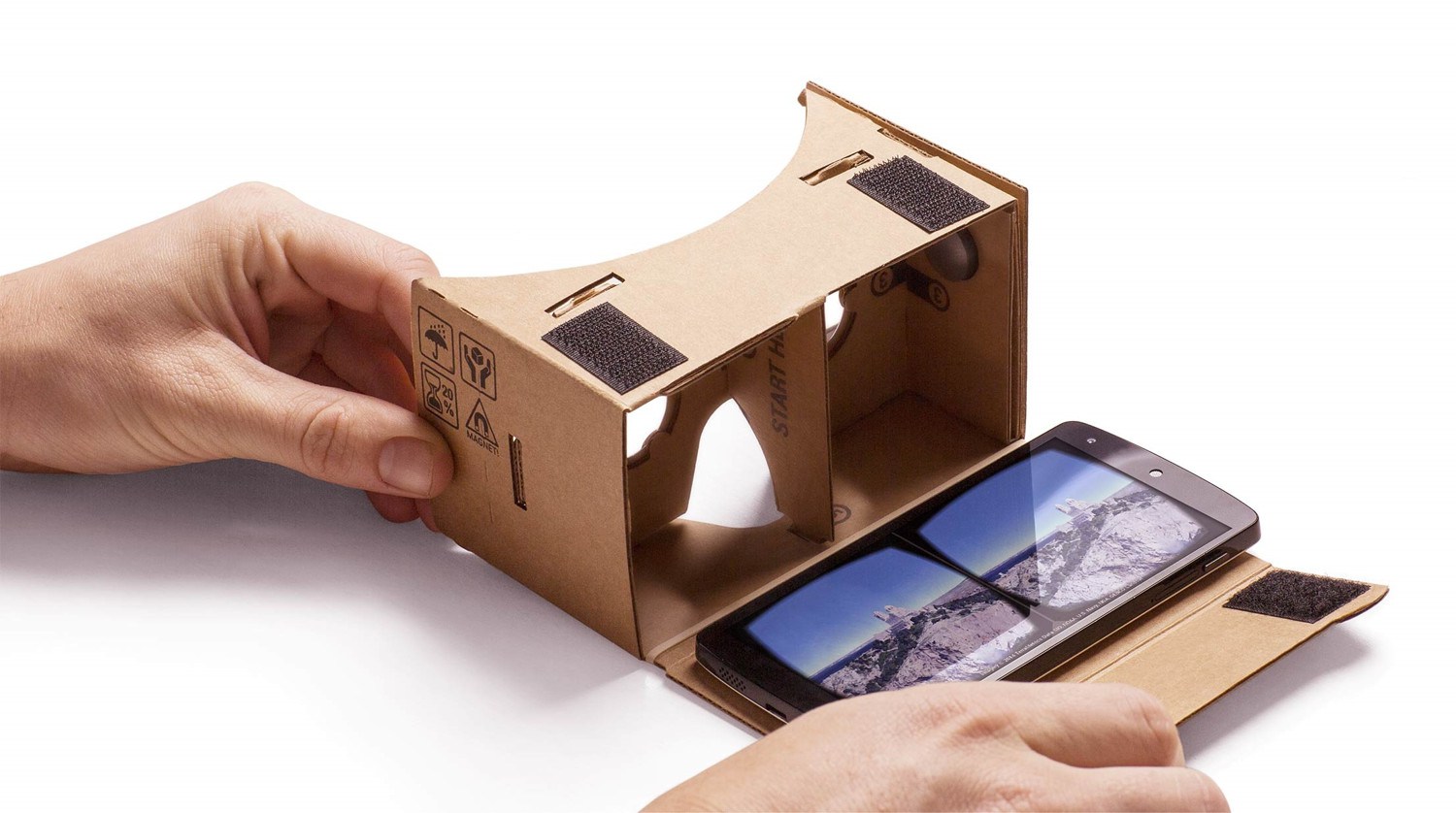
Google Cardboard
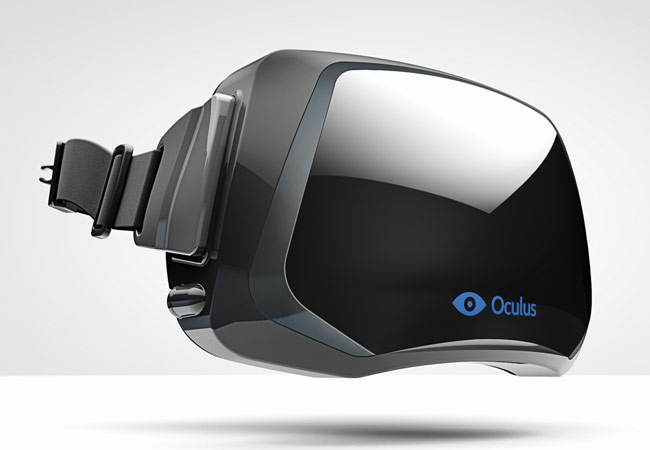
Oculus Rift
At the other end of the spectrum is Google. Born out of a development office in Paris as a side project in 2014, Google introduced a foldup piece of cardboard with two lenses and a magnet called Google Cardboard that can be purchased on Amazon for less than $5. The brilliance of Cardboard is that it uses your smartphone as the display, delivery and inertial guidance system. It's estimated there will be over 2 billion smartphone users worldwide by 2016. Over 1 million Cardboards have been purchased or given away in the past year. With half of a tenth of a percent market penetration, there's much room for growth.
Each day seems to bring news of additional plans for Head Mounted Displays. Some with expanded features, like capturing facial expression; others like simple old-fashioned eyeglasses and everything in between.
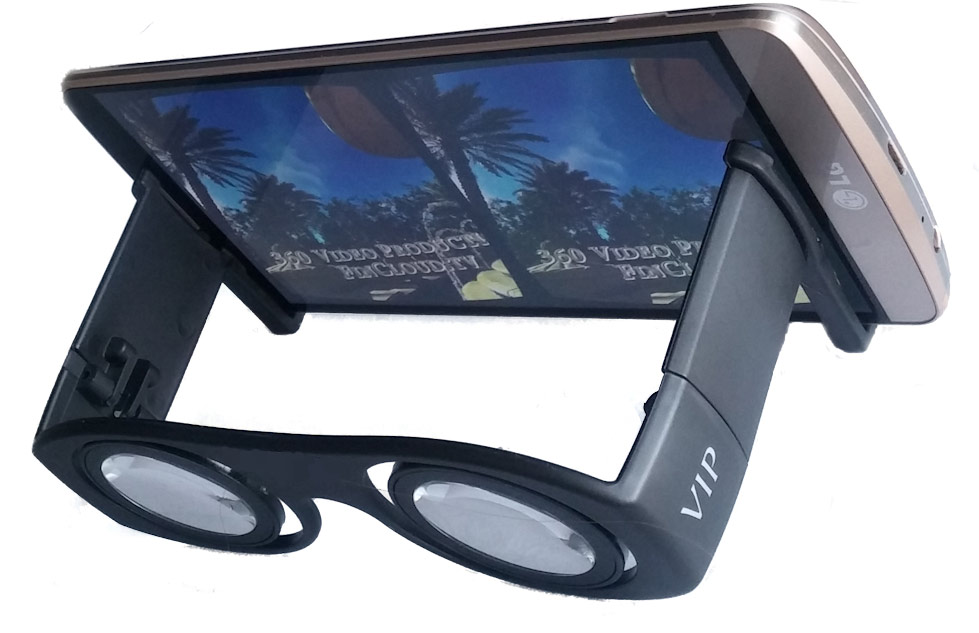
FinCloud VR Glasses
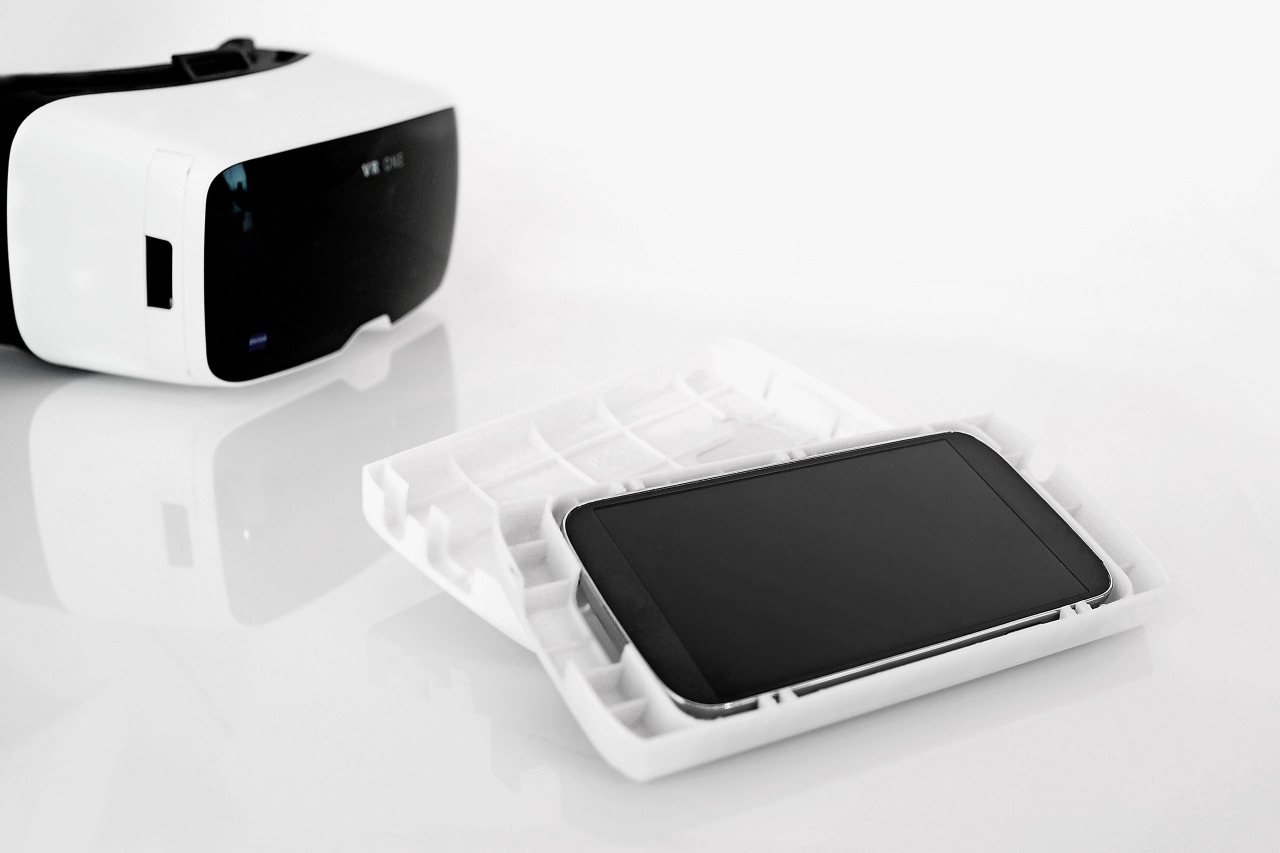
Zeiss VR ONE with smartphone holder
All this activity on the display side and the headline grabbing business activity has created both anticipation and demand for content. While computer generated imaging will play a significant role, especially in games, it is clear that real-world imaging will drive many applications like travel, sports, education, music, documentary and news. There is considerable production happening now in the creation of VR marketing material for products from automobiles to boots.
On the capture side, there are numerous techniques for creating 360-degree imaging for use in Virtual Reality displays. Fisheye lenses, parabolic mirrors, cameras pointing up to 45-degree mirrors, arrays of cameras pointing out -- all these techniques are being employed. GoPros arranged in a spherical array to minimize distance from the theoretical optical center, has become the go-to for many 360-degree filmmakers looking for high quality and relatively low cost. Larger cameras with more precision have been used for projects requiring matching with CGI.
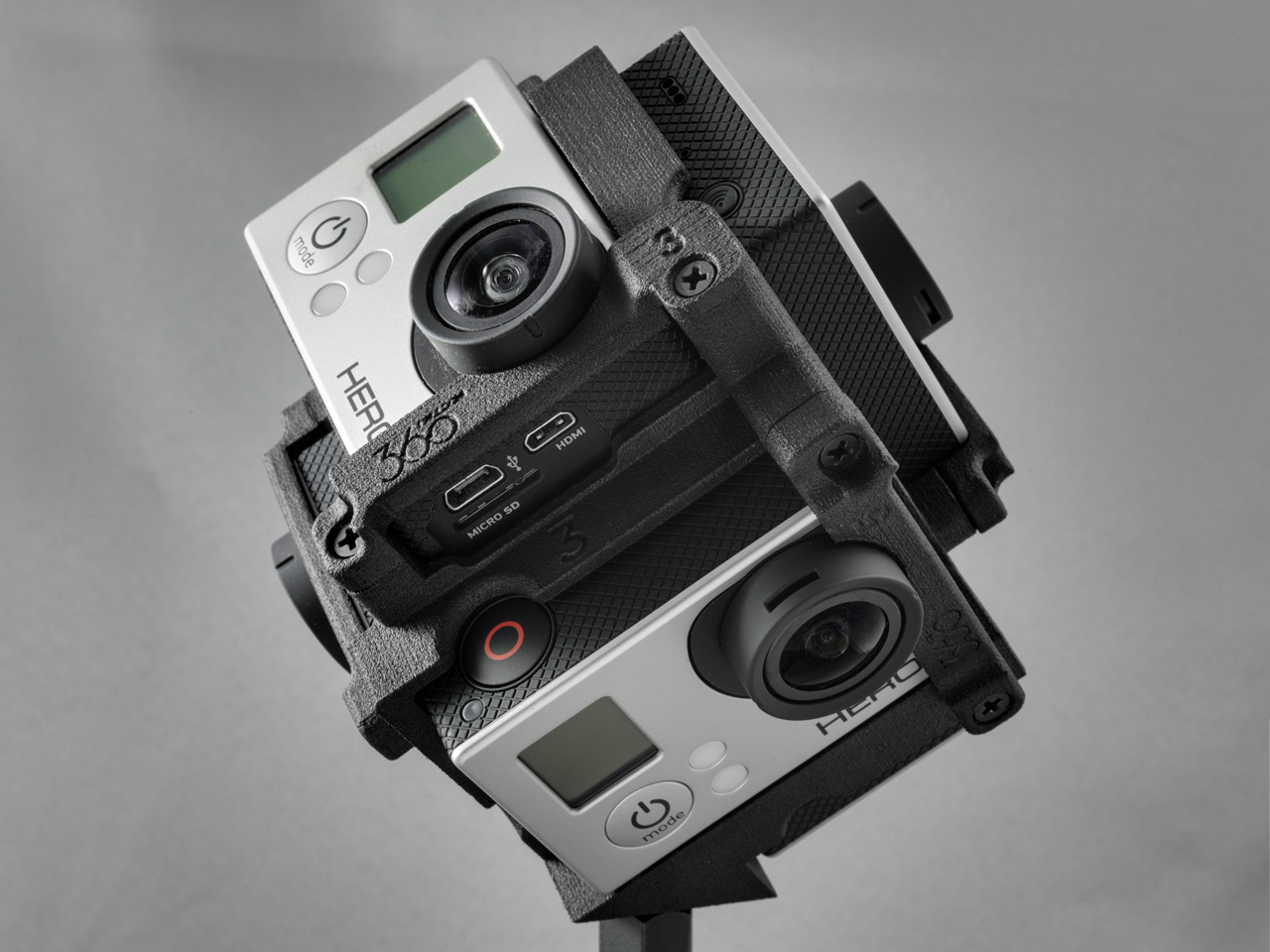
Freedom360 with GoPro Cameras
The choice to shoot and display 3D or 2D is a hot topic in VR right now. Given that cameras cannot be physically placed in the ideal position, and that parallax issues are therefore always something to consider, a significant amount of image processing is required to make 3D work properly. Proprietary 3D camera systems, with associated image processing software, have been developed by a number of companies.
The one certainty surrounding the groundswell of activity in VR is that change is constant and inevitable. Recent announcements, by companies like Google, with the promise of sophisticated image processing widely accessible to users, may change the 3D equation.
Even basic setups require investment of time and dollars to optimize results. AbelCine is therefore committed to working with VR filmmakers to make the experience as seamless (pun intended) as possible. We think it's important to offer a complete system with mount, cameras and professional accessories; as well as support for production and post workflow. Hands-on training, as we do for products like MōVI and Phantom will be an important aspect in all our locations.
Surrounding people with images to enable 360-degree viewing is neither a new idea nor one without controversy. From the "locality paradox" of 19th-century London to "holodiction" in 24th-century Star Trek, there has always been debate about virtues and limitations. Today, given existing and pending technology, there is discussion, argument, and in some cases religious fervor about the best way to capture and view VR. Our goal is to filter the discussion in order to give filmmakers who wish to create VR a viable set of tools, as well as the training and support to use them.
What kind of VR advancements do you think we'll be seeing in the next five or ten years? Let us know in the comments below!















